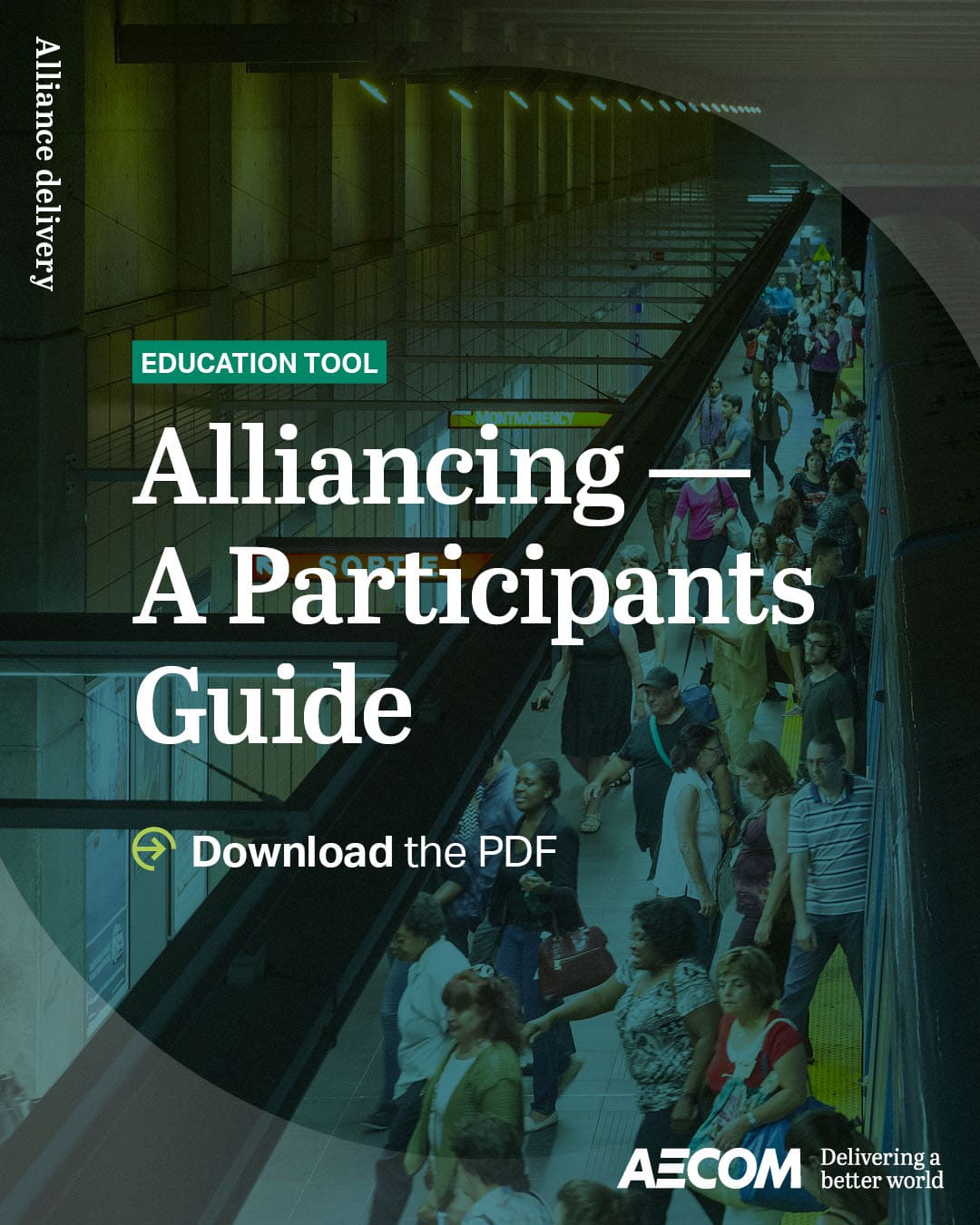If you’re involved in the delivery of large-scale infrastructure projects, it’s likely you are familiar with alliance contracting. Initially adopted for infrastructure in Australia and New Zealand, this collaborative approach to project delivery is quickly gaining traction in North America.
Often used on complex projects that require rapid delivery and cost certainties, alliancing is characterized by mutual goals, aligned commercial drivers, innovative thinking and collaborative behavior. It relies on aligning the commercial interests of constructors and designers with project owner objectives, a balanced distribution of risk, and rewards that are based on collective performance.
But how does the Alliance Delivery Model work and can it truly advance our critical infrastructure projects? Is it really the beginning of an evolution away from the traditional and sometimes adversarial nature of our business?
Aimed at giving back to our industry, AECOM’s Alliancing — A participants guide not only seeks to impart knowledge, it is a coaching tool that incorporates real life lessons “without spin.” We document actual experiences with project case studies that demonstrate the viewpoints of owners, constructors, designers and advisors alike. Our goal in writing this book was two-fold, we wanted to foster the further development of alliancing, while also encouraging our industry to continue raising the bar in what is widely considered a valid and valuable project delivery method.
Even though the methods of procurement have evolved, our selection process tips are still applicable today and the fundamentals of an alliance as described in this guide remain unchanged. The authors explore the importance of commercial and contractual frameworks while also considering the significant influence of people and culture. The book is designed to make it easy for all project participants, from all perspectives, to learn from actual examples and create even better, more sustainable infrastructure for all in the future. While alliancing is not suited to all projects, it is increasingly viewed as a Value for Money model in its ability to quickly provide cost-effective infrastructure that delivers significant community, environmental and social benefits.
Alliancing a Participants Guide has been an extremely useful tool in developing training material and providing inexperienced practitioners with an easy to read introduction to this form of project delivery. It has been gratifying to see so many requests domestically and internationally for copies of the guide that continue to come through today, so many years after it was published. As one of the co-authors I pass on copies of the guide with pride – it was a massive effort at the time but one that has paid off multiple times. I truly hope that all readers enjoy the journey to being experienced Alliance practitioners in their own right.”
Director Global Alternative Delivery and co-author of the guide
